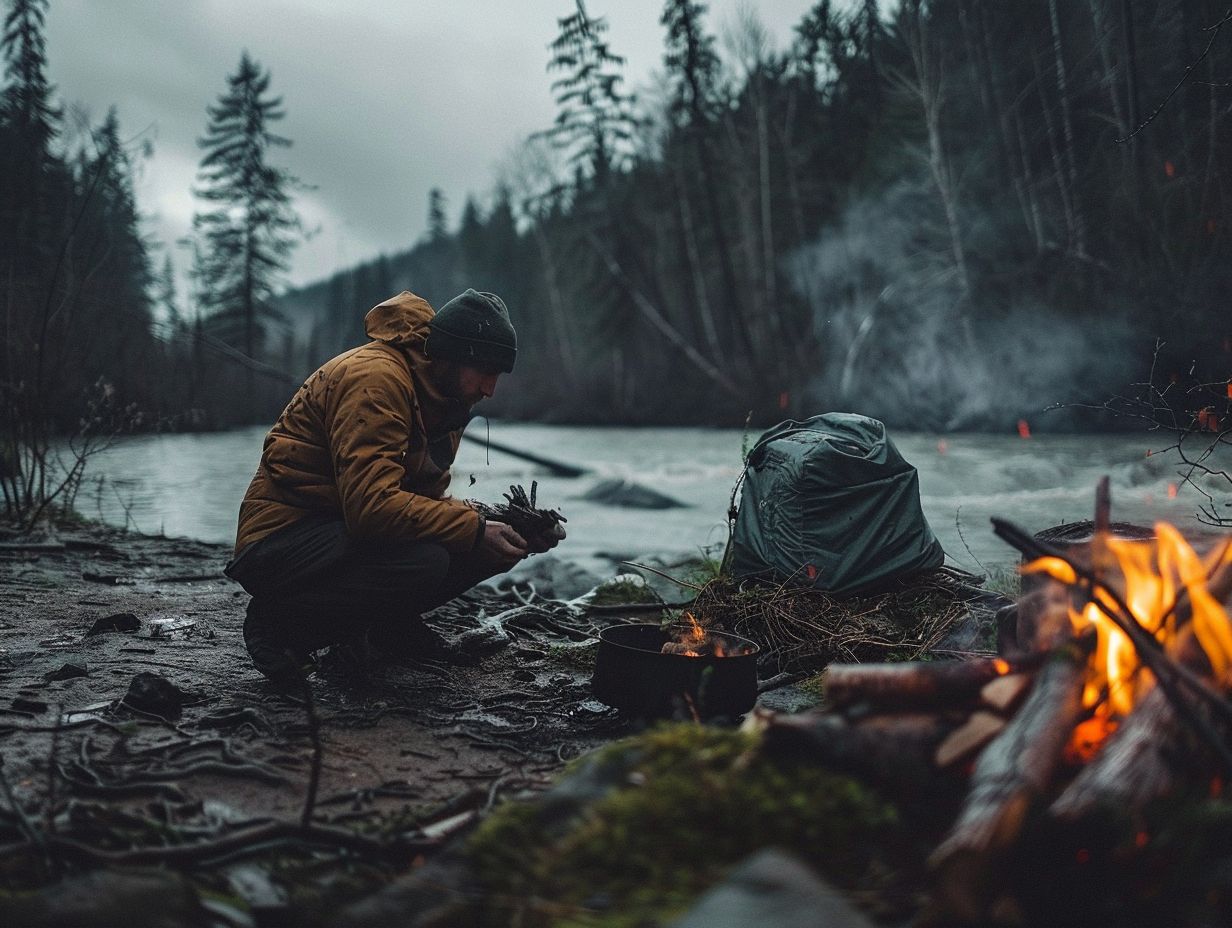Heritage sites provide you with a distinctive chance to immerse yourself in both nature and history, creating an optimal environment for a camping excursion.
Explore the advantages of camping at heritage sites, ranging from the assortment of activities and attractions accessible to the significance of showing respect for and conserving these historical venues.
Receive guidance on organising your camping journey, which encompasses tasks such as investigating and securing camping locations, organising and equipping yourself for your outing, and ensuring your safety during your exploration of these valued sites.
Embark on this journey with us as we delve into the marvels of camping at heritage sites!
Key Takeaways:
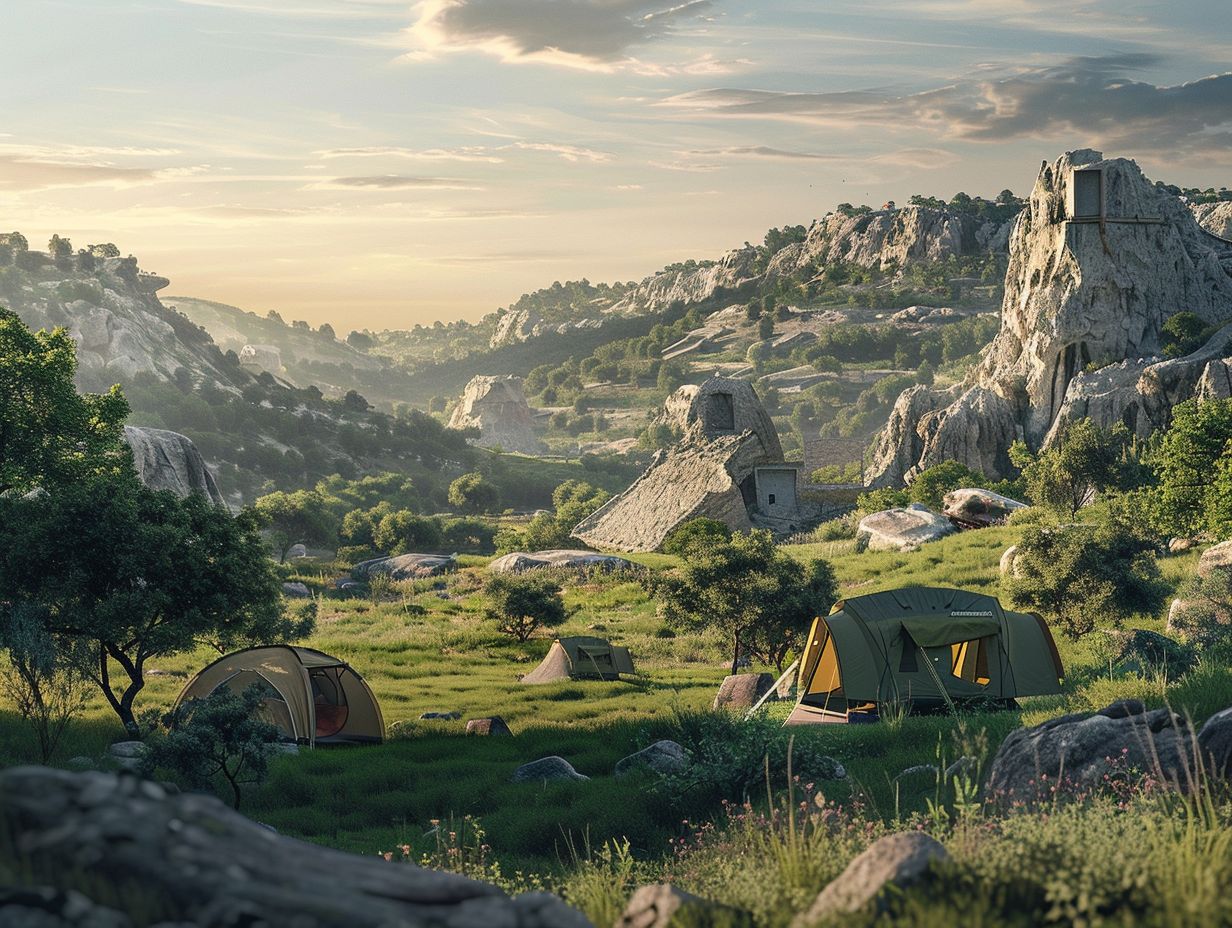
- Experience the unique blend of nature and history by camping in heritage sites.
- Proper planning and research are crucial for a successful camping trip to heritage sites.
- Respect and preserve the heritage sites by following Leave No Trace principles and safety considerations.
What are Heritage Sites?
Heritage sites are locations with cultural, historical, or ecological significance that are preserved for public education and enjoyment.
These sites often showcase the rich history and traditions of a region, providing a glimpse into the past for present and future generations. By safeguarding these sites, societies protect their cultural heritage and biodiversity for posterity.
Regulations and guidelines ensure that these locations are preserved in their original state, allowing visitors to experience the authenticity of these historical treasures. Permits may be required to access certain sensitive areas to prevent any harm to the delicate ecosystems or archaeological remains.
Ongoing research at these sites provides valuable insights into the history and traditions of ancient civilizations, contributing to educational initiatives and awareness campaigns about the importance of conservation.
Benefits of Camping in Heritage Sites
Camping in heritage sites provides you with a distinctive opportunity to fully engage with the natural beauty and historical importance of the area.
Whether you opt for camping in Arizona’s desert landscapes or on BLM-managed public lands, the experience of spending the night under the stars amidst a backdrop of history is truly incomparable.
Connecting with Nature and History
Connecting with nature and history whilst camping allows you to appreciate the beauty of designated camping areas within national forests, state parks, and backcountry regions. Exploring these landscapes provides you with a deeper understanding of the natural ecosystems and historical significance of the sites.
Connecting with nature in these unique camping environments offers you an escape from the hustle and bustle of daily life, allowing you to recharge and rejuvenate amidst serene surroundings.
Camping in state parks provides opportunities for recreational activities like hiking, fishing, and wildlife viewing, enhancing your connection to the outdoors. Backcountry camping allows for a more immersive experience, where you can truly disconnect from technology and connect with the raw beauty of untouched wilderness.
By selecting campsites carefully and following sustainable practices, you contribute to the preservation of these natural resources for future generations.
Planning Your Camping Trip
When planning your camping trip to heritage sites, you must explore the diverse opportunities available, obtain necessary permits, understand fees and regulations, and prepare for the wilderness experience ahead. Whether you choose primitive camping in remote areas or organised campgrounds, thorough planning is essential to ensure a memorable adventure.
Researching and Reserving Campsites
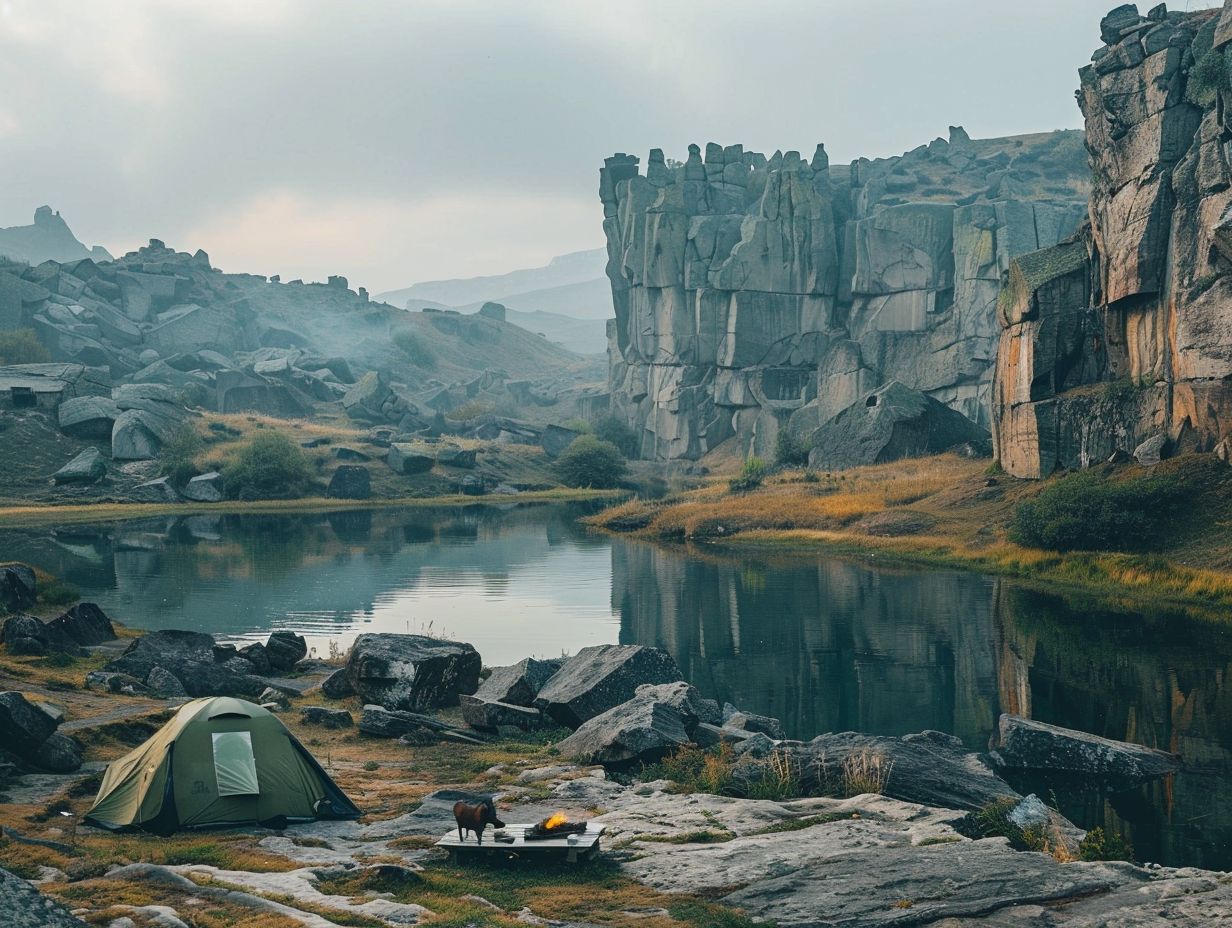
When researching and reserving campsites in heritage sites, you can customise your experience to align with your preferred recreational activities, whether you enjoy primitive camping in seclusion or prefer the amenities provided at reserved campsites. By making reservations in advance, you can ensure a well-prepared and seamless camping trip.
Exploring the various camping options available at heritage sites requires thorough research to effectively match your individual preferences with the diverse range of recreational activities offered.
These sites cater to a wide array of interests, from hiking and birdwatching to fishing and stargazing. Campgrounds that provide amenities such as hot showers, picnic areas, and electricity strike a balance between comfort and immersion in nature.
For those looking for a more rugged experience, primitive camping sites nestled in the wilderness offer an adventure that takes you back to basics. It is essential to plan ahead and book early, particularly during peak seasons when campsites tend to fill up quickly.
Packing and Preparing for the Trip
When preparing for your camping trip to heritage sites, it is important to take into account potential wildlife encounters, use available resources responsibly, understand the area’s rules and regulations, and fully embrace the immersive experiences and adventures that lie ahead.
To increase your awareness of wildlife, ensure you pack binoculars for bird watching and animal observation, field guides for plant identification, and bear-proof containers for safe food storage.
Effectively manage your resources by bringing reusable water bottles, portable solar chargers for electronics, and biodegradable toiletries to minimise your environmental footprint.
Before embarking on your trip, make sure to familiarize yourself with the specific regulations of the site, such as fire restrictions, wildlife protection zones, and designated camping areas.
By adhering to these guidelines, you will not only help preserve the environment but also create lasting memories in these historic and natural settings.
Exploring Heritage Sites on Your Camping Trip
When you explore heritage sites on your camping trip, a tapestry of history and culture is unveiled before you. Interactive maps will guide you through lands that are rich with the heritage of indigenous tribes.
By gaining an understanding of tribal governance and showing respect for tribal lands, you will enrich your camping experience with deeper insights into ancestral connections.
Activities and Attractions
Engaging in activities and exploring attractions at heritage sites requires your understanding of regulations, securing permits, conducting thorough research, seeking relevant information, following guidelines, and applying practical tips for a fulfilling experience.
In terms of heritage sites, it’s crucial for you to not only appreciate their beauty but also respect their historical significance. Obtaining permits is essential for activities like photography, hiking, or camping to ensure the preservation of these valuable sites.
Before planning your trip, take the time to research specific rules and restrictions that apply to each location. By adhering to regulations and guidelines set in place, you can help protect these sites for future generations to enjoy.
Respecting and Preserving Heritage Sites
Respecting and preserving heritage sites during your camping adventures requires adherence to established guidelines, respect for site-specific rules, contemplation of transformative experiences, embracement of new adventures, and making conscientious reservations that prioritize site preservation.
Leave No Trace Principles
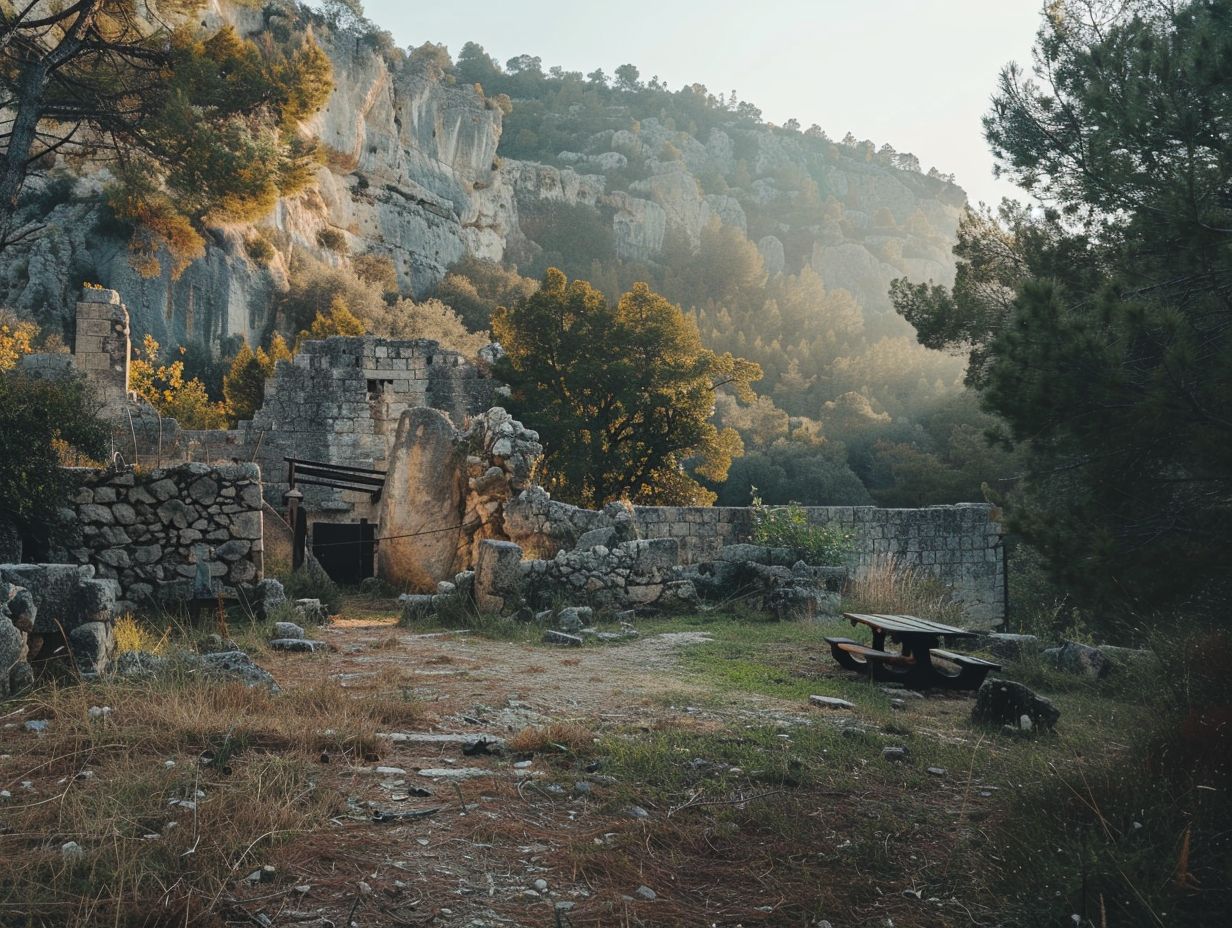
Embracing Leave No Trace principles whilst camping in heritage sites promotes the protection of wildlife, responsible use of resources, adherence to site-specific rules, and the cultivation of meaningful experiences and adventures in harmony with nature.
When you apply these principles, you foster a deep respect for the natural inhabitants of these sites and help in safeguarding their habitats. By being mindful of your impact on the environment, you contribute to the sustainability of resources for future generations.
By following site regulations, you ensure that these spaces are preserved for all to enjoy, both now and in the years to come. This approach benefits the ecosystem and enriches your outdoor escapades with memorable moments and a sense of environmental stewardship.
Safety Considerations for Camping in Heritage Sites
To ensure safety while camping in heritage sites, you must understand the local hiking trails, fishing regulations, wildlife refuges, and site-specific regulations. This knowledge will help you mitigate potential risks and ensure a secure and enjoyable camping experience.
Emergency Preparedness and Rules of the Site
Maintaining awareness of emergency preparedness measures and adhering to the rules of the site are vital components of ensuring a safe camping experience in heritage sites.
Understanding regulations, obtaining permits, conducting research, seeking information, following guidelines, and applying practical tips can enhance your overall preparedness.
Being informed about emergency protocols specific to the area you are camping in can make a significant difference when faced with unexpected situations.
It is crucial for you to familiarise yourself with the permit requirements of the heritage site you plan to visit, as this ensures compliance with preservation regulations.
Proper research will help you understand the environmental conditions and potential risks of the site, enabling you to prepare adequately. Staying updated on site-specific guidelines and diligently following them will contribute to a safer and more enjoyable camping experience.
Frequently Asked Questions
What is a heritage site?
A heritage site is a landmark or area that holds cultural, historical, or natural significance that is preserved for future generations.
Why should I consider camping in a heritage site?
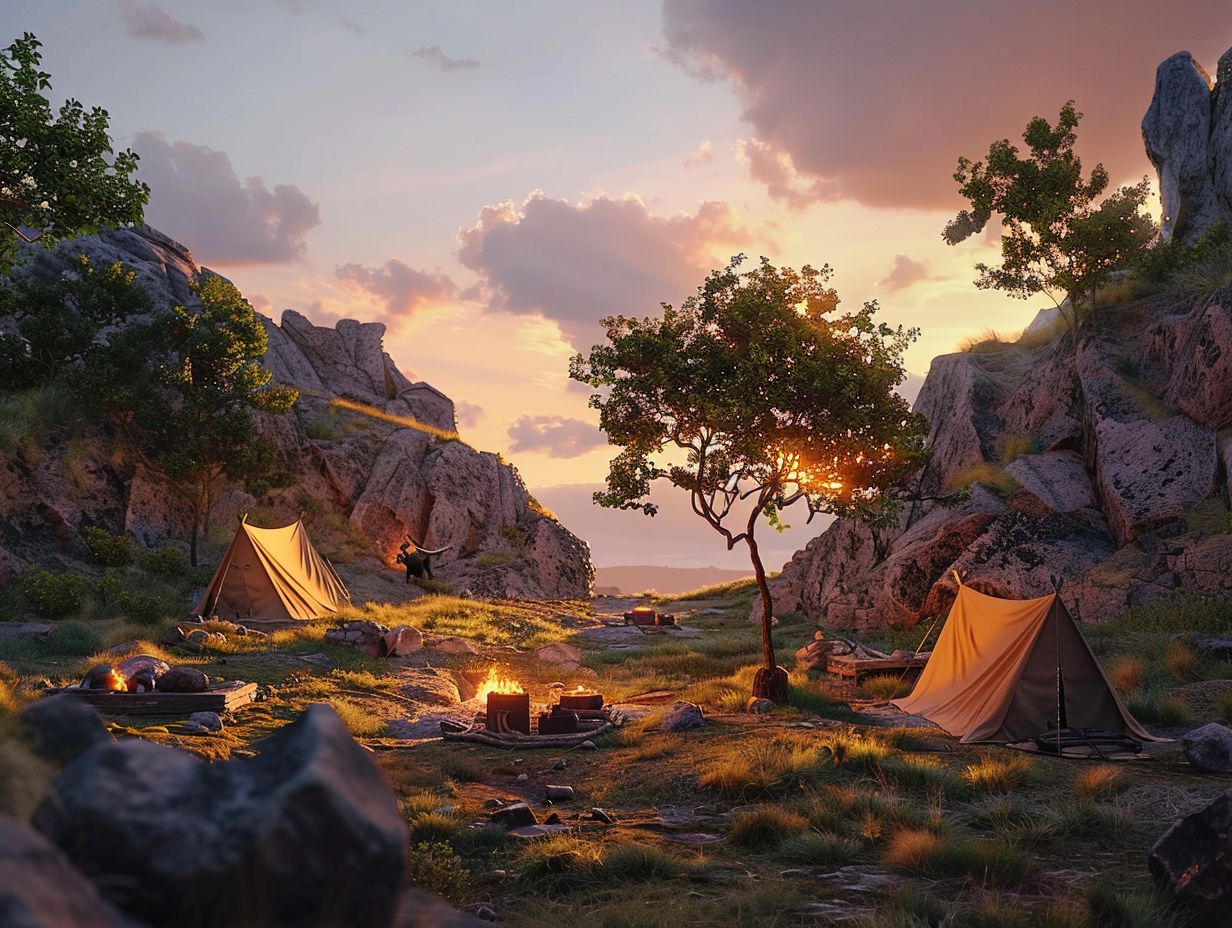
Camping in a heritage site allows you to experience the natural and cultural beauty of the location up close and for an extended period of time. It also offers a more immersive and authentic way to connect with the history of the site.
Do I need special permission to camp in a heritage site?
Yes, you will need to obtain a permit or permission from the relevant authorities to camp in a heritage site. This helps to ensure the preservation and protection of the site.
What should I pack for camping in a heritage site?
When camping in a heritage site, it is important to pack light and only bring essential items. This may include a tent, sleeping bag, cooking supplies, and appropriate clothing and footwear. It is also important to bring any necessary permits or passes.
Are there any rules or regulations for camping in heritage sites?
Yes, there are often specific rules and regulations for camping in heritage sites. These may include restrictions on campfires, noise levels, and waste disposal. It is important to familiarise yourself with these rules before your trip to ensure you are respectful of the site and its preservation.
What are some safety precautions to keep in mind when camping in a heritage site?
When camping in a heritage site, it is important to follow all safety precautions to protect yourself, others, and the site. This may include properly storing food to prevent attracting wildlife, being aware of any potential hazards or dangers in the area, and following all rules and regulations set by the site.


